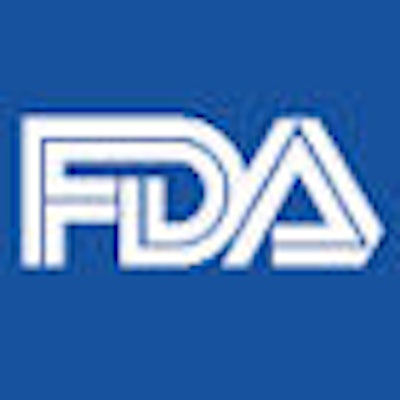
When the U.S. Food and Drug Administration (FDA) holds its two-day public workshop on MRI safety October 25-26, there will be no lack of opinions on how to remedy the dramatic increase in accidents and adverse events that have occurred in MRI settings in the past decade.
How bad is it? The FDA's Manufacturer and User Facility Device Experience (MAUDE) database documented a total of 40 incidents for MRI in 2004. In 2009, the total more than quadrupled, to 193 reported adverse events.
The escalating number of reported accidents in MRI settings has gone "virtually unnoticed, at a rate that appears to be outpacing the increased numbers of installed MR imaging units in this country," said Dr. Emanuel Kanal, director of MR services and professor of radiology and neuroradiology at the University of Pittsburgh Medical Center. "This is a worrisome trend."
Whether the trend is due to an actual rise in MRI accidents or is simply a case of more facilities reporting adverse events is up for discussion.
"We do know there is an increase in the reporting of the accidents, but that does not mean there is an increase in accidents," added Frank Shellock, PhD, adjunct clinical professor of radiology and medicine at the University of Southern California's Keck School of Medicine. "Is that due to the fact that people are more aware that they should be reporting an accident and/or because more MRI procedures are being done? It could be a combination of the two."
In either case, the purpose of the forum at the FDA's White Oak Campus in Silver Spring, MD, is to discuss ways to use MRI safely and eliminate accidents and unnecessary risks. The agenda will include general MRI safety, ferromagnetic detection systems, and scanning patients with implanted devices.
Common accidents
Kanal recently collaborated with Tobias Gilk, president and MRI safety director at Mednovus and senior vice president at design and architecture firm Rad-Planning, to review MRI accidents for 2008 and 2009 in the FDA's MAUDE database. Their analysis found that 92% of the reported accidents for which causes were identified fell into three categories:
- Radiofrequency (RF) thermal injuries or burns during an MRI scan
- Projectile effects from ferromagnetic objects inadvertently brought into MR imaging environments
- Hearing loss among patients who were not adequately protected
"All three -- burns, projectiles, and hearing damage -- were 100% avoidable," Gilk said.
Gilk said RF injuries and burns can be avoided by providing appropriate padding for patients using coil elements, and technologists should remove metal objects from patients prior to scans.
Regarding projectile accidents, there is no requirement to label items that could potentially be dangerous in the MRI environment. "You can keep 1,000 pounds of scrap steel in the control room to the MRI," Gilk said.
The solution is to identify items that are hazardous and provide more effective screening tools for catching things that have not been prospectively identified, through the use of ferromagnetic detection systems and controlling access to the MRI room.
Costly projectiles
Projectile-related accidents also can be very costly. Gilk cited a study from the U.S Department of Veterans Affairs' National Center for Patient Safety, which conducted a cost analysis of a projectile accident. It found that such events have an average cost of $43,172 per occurrence, based on the expense to repair the MRI scanner and legal settlements associated with an injury to a patient or staff person.
The total did not include downtime for the machine and lost revenue. "If the hospital is making, on average, $650 to $700 on technical revenue per MR exam and the machine is down for three days, [the facility] will miss 20 to 30 exams over that time, and that gets very expensive very quickly in terms of lost revenue," Gilk added.
As for hearing loss, facilities should provide patients with earplugs to prevent ear damage, and instruct patients on how to insert them properly. It may sound like a simple task to insert ear plugs, but not everyone's outer ear anatomy is the same, and one size does not fit all.
Kanal added that adverse events can be prevented by establishing and maintaining consistent MRI safety education among healthcare practitioners so they are aware of the potential risks that could occur throughout the MR imaging process. In addition, there should be "adequate MRI site access restriction and supervision by MRI healthcare professionals over patients and other non-MR personnel," he said.
Training personnel
Training is a critical ingredient to reducing the number of accidents in the MRI environment. Shellock maintains the website MRIsafety.com, as well as a site for the Institute for Magnetic Resonance Safety, Education, and Research (IMRSER.org). The website features safety information and streaming training programs for patients, nonmedical personnel, MRI technologists, and radiologists.
Training for nonmedical personnel, such as maintenance staff, housekeeping staff, and security officers, on how to conduct themselves in the MRI setting is just as important as it is for MRI technologists and radiologists. Nonmedical employees may not realize that an MRI scanner is always energized, or "on," and have been responsible for projectile and other accidents at some facilities.
Shellock said there are no data available to determine if nonmedical employees cause more projectile accidents than professional healthcare staff, but they do "make up a fair number of the problems that have occurred."
Education and training programs need to be conducted on a regular basis, and MRI facilities "have to make a concerted effort to train anyone who works in and around the MRI setting," Shellock added. "It has been our motivation to put together these comprehensive programs. Now it is a matter of disseminating the information and making sure people understand that these programs do exist and they are able to access them."
While the use of ferromagnetic detection systems to prevent projectile incidents is widely recommended, Shellock noted that there are no current data or peer-reviewed literature on the technology's efficacy. He and his colleagues are preparing to evaluate ferromagnetic detection systems to determine the benefits of their use.
The FDA's safety workshop also plans to consider the issue of MRI safety for patients with implanted devices. Inconsistencies in labeling information for those devices are a major concern, according to Shellock. "That can cause a lot of confusion, and we often see MRI technologists and radiologists who may elect not to scan the patient," he added. "That is a disservice to the patient."
Government intervention
Kanal related a discussion a few years ago with Tommy Thompson, who was then the secretary of health and human services. "He quite succinctly explained to me that we in radiology would need to police ourselves regarding MR safety, and that if we do not succeed in doing so, we could count on the government to step in to regulate us instead."
Kanal acknowledges that external regulation is needed, with one caveat: MRI sites must accept standardization of MRI safety practices "to coherently and consistently prevent MRI safety-related incidents and injuries," he said. "We can either accept standards that we create and define, or we can wait for another terrible safety event to occur and be widely publicized throughout the world before pressure mounts on organized radiology to impose externally defined standards, guidelines, and practices upon us."
It has been approximately 10 years since the American College of Radiology (ACR) introduced its MRI safe practice guidelines to improve MRI safety, Kanal noted. Since then, the document has been updated twice and is in the final stages of a 2011 update.
Radiology's responsibility
"The radiological community and industry should universally and voluntarily adopt these easily implemented recommendations, guidelines, and practices in order to continue to maintain and improve our MRI safety record throughout our industry," Kanal said.
Gilk sees the FDA workshop as a way to promote and emphasize the importance of MRI safety.
"While the FDA does not have specific authority in terms of the point of care for MRI, I hope they use this meeting as the bully pulpit [and] highlight the growth in accidents, hold accountable states and the governing regulatory and accreditation organizations, and ask the difficult question of how in this time of increased MRI safety awareness have we been so ineffective in managing the risks and reducing the rates of accidents," he said. "That's the $64,000 question. How can we know so much about what causes these accidents and how to prevent them, and yet fail so profoundly in implementing the protection?"



















